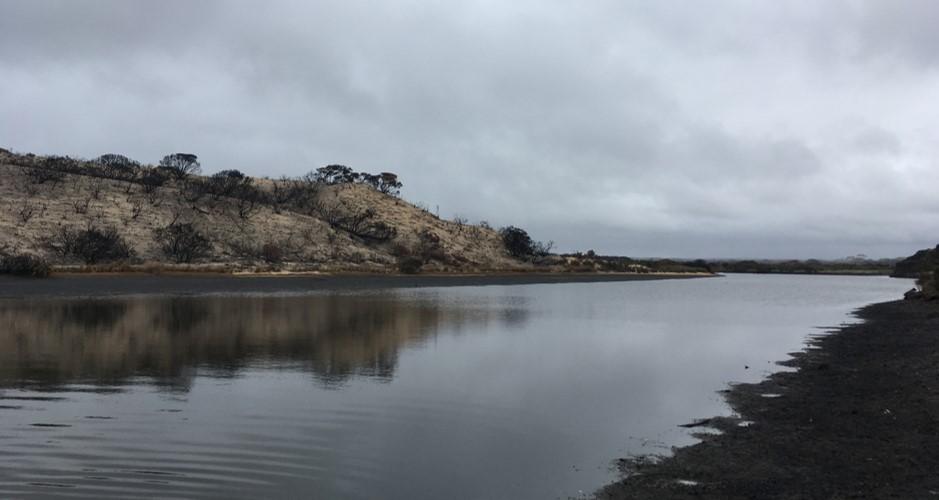
PUBLICATIONS
Published works

Effects of the January 2020 bushfires on estuarine systems of Kangaroo Island: post event field data collection
| Title | Effects of the January 2020 bushfires on estuarine systems of Kangaroo Island: post event field data collection |
| Publication Type | Report |
| Year of Publication | 2020 |
| Authors | Reis-Santos, P, Gillanders, B |
| Document Number | 603 |
| Date Published | 08/2020 |
| Institution | Bushfire and Natural Hazards CRC |
| City | Melbourne |
| Report Number | 603 |
| Keywords | Bushfire, data collection, estuarine system, kangaroo island |
| Abstract | The 2020 summer bushfires on Kangaroo Island were the largest in the Island’s recorded history, with over 200,000 hectares and more than 40 % of the island burnt (DEW, 2020). The impacts of these bushfires will not be confined to the terrestrial landscape and are likely to have substantial detrimental impacts on the island’s aquatic systems, particularly after rainfall. Post-fire exposed soils are highly erodible, and therefore intense precipitation events or seasonal rainfall can result in the runoff of nutrients and ash enriched sediments, debris and other products of combustion into waterways. These runoff events, allied to heavy sedimentation, can lead to deteriorating water quality, potentially triggering eutrophication, low oxygen events, and compromise aquatic fauna. In addition, contaminants, including trace elements and products of combustion such as polycyclic aromatic hydrocarbons (PAHs) can also enter waterways (Olivella et al 2006, Shakesby and Doerr, 2006, Smith et al 2011, Sequeira et al 2020). One area of concern in Kangaroo Island are the estuarine systems downstream or adjacent to burnt areas. Despite the ecological importance of estuarine environments and the multiple ecosystem functions they provide (including nursery grounds for juvenile fish), the impacts of bushfires in estuaries are yet to be investigated. Furthermore, because estuarine systems in Kangaroo island are not permanently open to the sea, the impacts of accumulated soot, ash and sediment channelled into estuaries could be exacerbated, and have the potential to disrupt complex ecological and biogeochemical cycles, increase contaminant loadings and result in pervasive effects for local fish communities. Ultimately, there are substantial knowledge gaps in our understanding of water quality impacts and mobilisation of heavy metals and isotopes in the aftermath of bushfires in estuaries, and these add to the lack of understanding of the ecology and geochemistry of estuaries in South Australia. In this context, the Bushfire and Natural Hazards CRC, via the their quick response funding, provided financial support for travel-related expenses to undertake surveys on Kangaroo Island in estuaries within areas directly affected by this unprecedented bushfire season, and control sites outside these areas. These sampling events are part of broader research where in the long term, we aim to evaluate the impacts of bushfires on estuarine water quality and on estuarine fish, as well as trace the mobilisation and fluxes of contaminants released by bushfires into estuarine systems. |
| Refereed Designation | Non-Refereed |
Published Works


